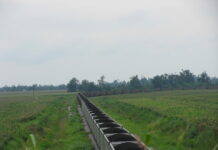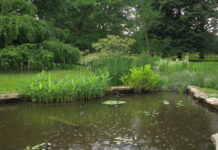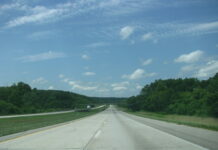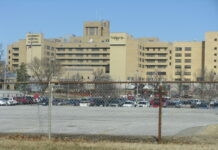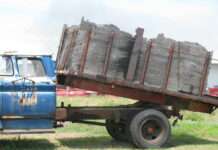Photo credit: DiasporaEngager (www.DiasporaEngager.com).
Discussion
During the 2023–24 respiratory virus season, the peak SARS-CoV-2 infection rate (133.8 per 100,000 residents) was lower than the peaks of 306, 435, and 176 during the 2020–21, 2021–22, and 2022–23 respiratory virus seasons, respectively¶¶¶; however, SARS-CoV-2 infection continued to cause substantial morbidity among nursing home residents during the 2023–24 respiratory virus season. COVID-19–associated hospitalizations among nursing home residents peaked at 7.1 per 10,000 residents, more than eight times the peak weekly rate of 0.87 per 10,000 among all U.S. adults aged ≥70 years.**** Although data reported to NHSN by nursing homes cannot be directly compared with those submitted by hospitals because of differences in methodology and populations, this stark difference underscores the high risk for COVID-19–associated hospitalization among nursing home residents.
Despite the lower rates of SARS-CoV-2 infection among nursing home residents during 2023–24 compared with previous seasons, during each week of the current study period, 14.9%–26.1% of nursing homes reported one or more incident cases of SARS-CoV-2 infection and 8.6%–16.6% reported two or more incident cases. Although, as of March 2024, CDC no longer recommends that members of the public isolate for 5 days after onset of COVID-19 symptoms,†††† this guidance does not apply to residents of long-term care facilities. According to thresholds set by the Council of State and Territorial Epidemiologists and the Council for Outbreak Response: Healthcare Associated Infections and Antimicrobial-Resistant Pathogens, one or more cases of SARS-CoV-2 infection in a nursing home should trigger the facility to conduct additional investigation including, depending on the characteristics of the outbreak and the facility, collecting additional data, conducting additional laboratory testing, implementing infection control practices, and collaborating with relevant public health jurisdictions. A nursing home with two or more cases within 7 days should report the cases to public health, and two or more cases with possible common exposure constitutes an outbreak (5). Thus, each week during the 2023–24 respiratory virus season, a proportion of nursing homes underwent case investigations, and some likely experienced SARS-CoV-2 outbreaks.
In September 2023, ACIP recommended the updated 2023–2024 COVID-19 vaccine for persons aged ≥6 months (4). During the 2023–24 respiratory virus season, coverage with the updated 2023–2024 COVID-19 vaccine among residents of nursing homes reporting to NHSN reached 41.5% overall and remained <50% in every U.S. region. This finding indicates that an important prevention tool is being underutilized in this population. In February 2024, CDC and ACIP recommended that all adults aged ≥65 years receive 1 additional dose of an updated 2023–2024 COVID-19 vaccine at least 4 months after the previous updated dose; additional doses are also available for persons who are moderately or severely immunocompromised.§§§§ Surveillance of COVID-19 vaccination coverage among nursing home residents is critical to supporting tailored outreach activities to increase vaccination coverage.
NHSN is the only national surveillance system continuously monitoring COVID-19 incidence, COVID-19–associated hospitalization, and COVID-19 vaccination coverage among nursing home residents. COVID-19 surveillance data from NHSN is provided to state and local health departments; these data have also been used to support infection prevention and control policy and evaluate vaccine effectiveness (2).
Limitations
The findings in this report are subject to at least four limitations. First, data are reported by nursing homes; therefore, misclassification of SARS-CoV-2 infection, COVID-19–associated hospitalization, and COVID-19 vaccination status of residents is possible. Second, this analysis was conducted using aggregate, facility-level data reported to NHSN; therefore, crude rates included in this analysis could not account for potential person-level confounding factors, including time since vaccination, previous infection, age, or comorbidities. Third, this analysis did not account for regional or facility-level differences in SARS-CoV-2 testing. Finally, COVID-19–associated hospitalization was defined by NHSN as a hospital admission within 10 days after a laboratory-confirmed SARS-CoV-2 infection. Thus, it is possible that some hospitalizations were classified as COVID-19–associated but were the result of other medical conditions. However, NHSN’s method for defining COVID-19–associated hospitalizations is consistent with that of other surveillance systems.¶¶¶¶
Implications for Public Health Practice
COVID-19 continues to cause substantial morbidity among nursing home residents. Nursing homes should continue to implement recommended infection prevention and control practices,***** including encouraging residents, caregivers, and nursing home staff members to remain up to date with all recommended COVID-19 vaccine doses to limit the introduction and spread of SARS-CoV-2 infection within nursing homes (4). Ongoing surveillance for SARS-CoV-2 infections and COVID-19–associated hospitalizations among nursing home residents is necessary to develop and evaluate evidence-based interventions for protecting nursing home residents.
Source of original article: Centers for Disease Control and Prevention (CDC) / Morbidity and Mortality Weekly Report (MMWR) (tools.cdc.gov).
The content of this article does not necessarily reflect the views or opinion of Global Diaspora News (www.GlobalDiasporaNews.com).
To submit your press release: (https://www.GlobalDiasporaNews.com/pr).
To advertise on Global Diaspora News: (www.GlobalDiasporaNews.com/ads).
Sign up to Global Diaspora News newsletter (https://www.GlobalDiasporaNews.com/newsletter/) to start receiving updates and opportunities directly in your email inbox for free.






